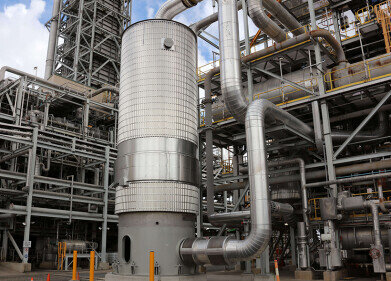-
 Professor Gao Meng, Professor of the Department of Geography at HKBU, hopes the statistical model which predicts summertime co-occurrence of heat wave and air pollution in China can help mitigate damage from the joint hazards.
Professor Gao Meng, Professor of the Department of Geography at HKBU, hopes the statistical model which predicts summertime co-occurrence of heat wave and air pollution in China can help mitigate damage from the joint hazards.
Air Clean Up
Model for Predicting Co-Occurrence of Heat Waves and Air Pollution in China
Aug 03 2023
A groundbreaking study spearheaded by Hong Kong Baptist University (HKBU) has yielded a statistical model capable of predicting the occurrence of summertime heat waves and air pollution in China. By analysing patterns of springtime warming in the western Pacific Ocean, western Indian Ocean, and Ross Sea, the model offers valuable insights for government authorities and the general public to proactively mitigate the impact of these combined hazards.
Published in the esteemed international academic journal Proceedings of the National Academy of Sciences (PNAS), the research highlights the escalating frequency of heat wave and air pollution co-occurrence. The global concern over climate change has intensified, with a record-breaking average daily temperature of 17.23°C recorded in early July this year. Heat waves have been rampant in various regions across Asia, Africa, Europe, and North America.
The link between hot sunny days and air pollution arises from accelerated ozone formation due to rising temperatures. This tandem of extreme conditions can cause amplified damages to human health and the ecosystem. Surprisingly, the joint occurrence of heat waves and air pollution has not received adequate attention until now.
Led by Professor Gao Meng from the Department of Geography at HKBU and Dr. Wang Zifa from the Institute of Atmospheric Physics at the Chinese Academy of Sciences, the research team analysed the spatial distribution and temporal variation of heat wave and ozone pollution events in China during the summers from 2005 to 2021. They noted an alarming intensification and frequency of these events in the North China Plain, which comprises densely populated cities and provinces such as Beijing, Tianjin, Hebei, Shandong, Henan, Anhui, and Jiangsu. More than 80% of co-occurrence incidents between 2005 and 2021 were found to be prevalent on heat wave days.
Delving deeper into the causative factors, the researchers employed empirical orthogonal function analysis—a common climate study tool—to study the warming patterns in the western Pacific Ocean, western Indian Ocean, and Ross Sea during spring. Their findings established a connection between these oceanic temperature anomalies and the frequency of heat wave and ozone pollution co-occurrence in the North China Plain during summer. Changes in sea surface temperatures in these regions during spring were found to influence air pressure, wind movement, precipitation, and ground radiation—key factors influencing the occurrence of extreme heat and air pollution.
Capitalizing on these revelations, the research team crafted a regression-based statistical model that uses springtime sea surface temperature data from the western Pacific Ocean, western Indian Ocean, and Ross Sea to predict the potential co-occurrence of heat waves and ozone pollution in China during summer. This advanced prediction offers ample time—several months or even an entire season—for government authorities and the public to take precautionary measures.
Dr. Gao emphasizes the significance of these predictions, stating that relevant government authorities can issue warnings and implement relief measures if the upcoming summer is expected to witness heightened heat wave and ozone pollution extremes. This proactive approach allows sensitive sectors like agriculture and communities to mitigate the adverse effects. Moreover, authorities can optimize their management strategies for air pollutants and greenhouse gases by setting more stringent control targets or coordinating sources of electricity generation.
Looking ahead, the research team aims to develop a statistical model capable of predicting the co-occurrence of heat waves and air pollution events up to several years in advance. This endeavour holds great promise for bolstering the nation's preparedness and management of related hazards.
Events
IWA World Water Congress & Exhibition
Aug 11 2024 Toronto, Canada
Aug 25 2024 Stockholm, Sweden and online
Sep 03 2024 Mexico City, Mexico
Sep 03 2024 Mexico City, Mexico
Sep 03 2024 San Diego, CA, USA













